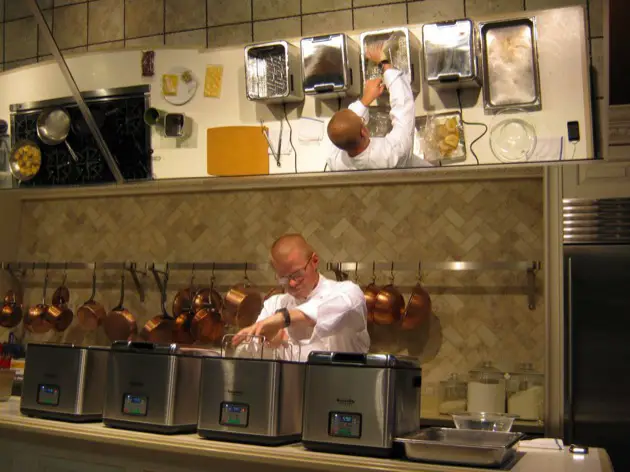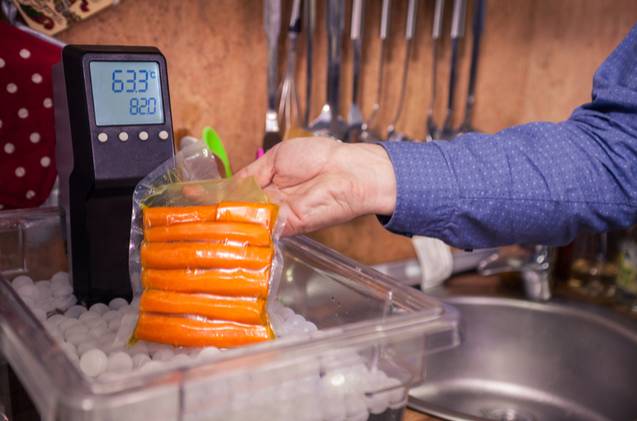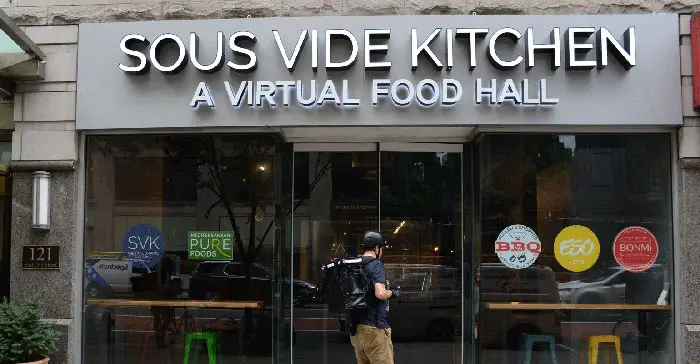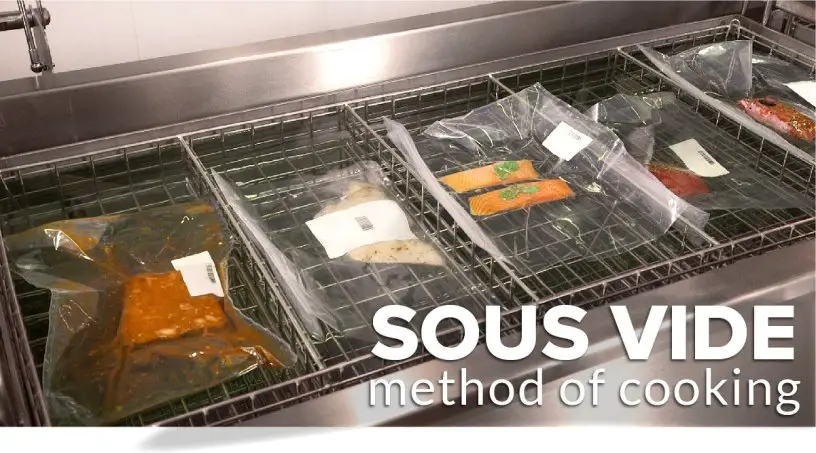One of our two recently commenced student interns is Gaurav Joshi. Gaurav is a senior professional chef, making a career change to food science. He’s currently studying at RMIT University in Melbourne. Combining his interests and backgrounds in professional cooking and food safety, Gaurav suggested a blog article on the food safety aspects of Sous Vide cooking … and here it is!
Unlike food manufacturing, where strict time and temperature combinations are rigorously observed, the realm of hospitality and domestic cooking abounds with questionable preparation methods, from a food safety context. While thermal processing or non-thermal processing of equivalent severity must be employed the world over, regardless of jurisdiction (although I’m sure there are obscure exceptions!), uncooked food (i.e. raw!) is permitted in the hospitality industry. Why is the strict adherence to microbial food safety in food manufacturing not observed in hospitality? That’s the topic for another blog article, for sure. However, one point is for sure, you can rely on the microbial food safety of industrially manufactured food – but not so with food in the hospitality scene. No matter what people say or how much they try and convince you, food that is not prepared to government-stated food safety conditions is not safe. There’s no such thing as “cooking” food with lemon juice for example, as is done with ceviche. Yes, true, the low pH of the lemon juice will denature the fish proteins, giving it the appearance of being “cooked”, as it has physically changed appearance, but don’t be fooled – the fish is still unsafe to eat as it is raw, it hasn’t actually been cooked yet.

So how about cooking techniques that use moderate heat? One of those is sous vide, which uses temperatures which hover just below and a little above the temperature danger zone. Does that make it risky from a food safety perspective? It sure does. The temperature danger zone is between 5 °C – 60 °C, which means to be safe, food must be kept for extended periods below 5 °C or above 60 °C. Extended periods means beyond four hours, because once food has been in the temperature danger zone for a total of four hours (not just four consecutive hours, but four hours in total), it is considered unsafe and must be discarded. When one considers that cooking some meat rare by sous vide has food sitting in the temperature danger zone for up to 72 hours, once starts to see just how risky and unsafe sous vide is!

While different bacteria are inactivated at different rates at different temperatures, there’s a general consensus, as echoed by the recommendations of public health authorities, that temperatures over 70 °C are required for safe cooking of food. That would be the basis for the temperature danger zone ending at 60 °C, then there’s a margin of safety, then approximately 70 °C and above is a safe cooking temperature. Therefore, when you have food cooking for any period of time in the temperature danger, let alone several, there’s no doubt the element of risk is increased. Clearly, this is an element of risk that doesn’t need to be introduced.


Let us look at it closer … the D value, which in thermal inactivation is the decimal reduction time, is the time at a certain temperature where one log (90%) of microorganisms is eliminated. In the table extract below, Li and Gänzle (2016) reviewed heat resistance studies of Escherichia coli, and show that between 55 °C and 58 °C degrees, the D value is around 12 to 15 minutes. This means that under a worst case scenario of a heavy bacterial load of contaminating E. coli, it would take nearly 1½ hours to reduce the cells to a negligible amount. With small (2½ cm) tender cuts of beef being cooked for just an hour at 57 °C, there’s certainly an element of risk there. With fish, the situation is even more concerning with, a temperature of just 52 °C used and a cooking time of only 20 to 30 minutes.

Furthermore, with lengthy periods at sub-lethal temperatures, any heat resistant mutants will be selected for, as would thermoduric microorganisms. Both of these will begin to dominate, ultimately proliferating in the cooking food, while the home cook is blissfully unaware of what is happening.
What can be done and should we keep eating a food that has potentially to be microbial unsafe? It is certainly best to avoid such food and cooking methods for meat as it is just not worth it. This is especially the case if you are a home cook. Chefs will know how to perfect the technique for exceptional food quality while ensuring a high level of food safety. However, it is best not to experiment with this technique at home, due to the case at which food safety breaches can be made. The New South Wales Food Authority in Australia (https://www.foodauthority.nsw.gov.au/consumer/food-at-home/cooking-sous-vide) have put together a guide on how to safely cook sous vide, but whatever the case, best to leave it to the professionals.
- prepare thinner portions of food so that heating and cooling are rapid
- keep water bath temperatures at 55 °C or hotter
- limit the time food is cooked at cooler than 55 °C to no more than 6 hours
- use quality equipment with adequate heating capacity and excellent temperature control
- check water and/or food temperatures with an accurate, tip-sensitive digital thermometer accurate to 0.1 °C
- store prepared foods for no more than 5 days
- do not compound multiple risks, for example, if meat has been mechanically tenderised do not cook large portions for a long time at low temperatures.
Reference
Li H and Gänzle M (2016) Some Like It Hot: Heat Resistance of Escherichia coli in Food. Front. Microbiol. 7:1763. doi: 10.3389/fmicb.2016.01763


